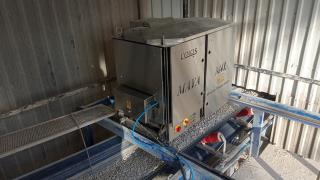Quality control has been automated to such an extent that we run the severe risk of turning into a generation of button-pushing operators instead of thinking analytical scientists. It is imperative that analytical scientists responsible for the quality control in a plant remain vigilant and regularly evaluate their data because automated sampling systems, plant process control systems, analytical equipment and data management systems need so little human input once set up correctly. By Maggi Loubser, PPC Ltd, South Africa.
X-Ray Fluorescence (XRF) spectroscopy is possibly the most-used quality assurance tool in the cement industry. These highly-sophisticated instruments are stable and reliable, but can only analyse what has been presented to the spectrometer and thus it is important to put sufficient thought into the sampling and sample preparation process.
Interpretations and process decisions are made on the basis of quantitative data and therefore are critically dependent on data reliability. The analytical process forms the final stage of data genesis, involving a miniscule aliquot taken from a sample and a potentially long and detailed sample collection and preparation history.
